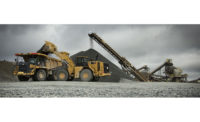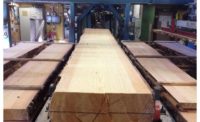News that House Democrats and the Trump administration have come to an agreement on the United States-Mexico-Canada Agreement (USMCA) provided a bit of calm in the storm over trade policies that have roiled the construction market since 2017.
The House voted to approve the NAFTA replacement by a 385 to 41 vote, with the Senate set to take it up in January.
The National Association of Home Builders (NAHB) praised the agreement, noting that “by modernizing and strengthening free trade with our largest trading partners, the U.S. International Trade Commission predicts [it] will create more than 175,000 new jobs, add about $70 billion to the economy and boost wages for American workers.”
David Logan, NAHB director of tax policy analysis, says important effects of the deal are providing some level of certainty to U.S. trade policy with key partners and increasing business confidence, which give President Donald Trump “a desperately needed political win,” he says.
“Otherwise, he pledged on the campaign trail to withdraw from the North American Free Trade Act treaty (NAFTA), if it wasn’t renegotiated. The fallback would have been to withdraw before the election to fulfill his campaign promise. That would have been disastrous.”
|
Related Link |
Dispute Resolution
NAHB is particularly focused on the effect on lumber prices. Logan noted that one of the critical components that remains in place from NAFTA is a dispute resolution mechanism, which allows a panel with representatives from each country to challenge tariffs that may be imposed. “It’s been used so often in softwood lumber disputes with Canada to combat tariffs that the U.S. has placed on incoming lumber,” Logan adds.
The American Iron and Steel Institute (AISI) also praised the new trade deal. “Implementation of the USMCA is critical to strengthening the steel industry’s competitiveness in the face of the continued challenges from global excess capacity and weakening demand,” Thomas Gibson, institute president and CEO, said in a statement.
AISI has been a proponent of many Trump administration actions on trade, including its use of the Section 232 trade remedy, a provision in the 1952 Trade Expansion Act that allows the president to impose tariffs on certain imports based on a federal determination of national security impact. Lisa Harrison, an AISI spokesperson, says this has “helped create a more favorable climate for steel, with imports declining and shipments and production rising since the tariffs’ implementation.”
Harrison says shipments of steel mill products were higher in 2018 than in 2017 and are up in 2019 compared to the same period in 2017. “Several idled steel mills have been restarted, and American steel producers have announced plans to invest in new steelmaking capacity,” she adds. “However, the momentum has been tapering off lately recently due to slowing demand.”
The Association of Equipment Manufacturers sees the deal as good news for equipment manufacturers. “Getting this across the finish line will preserve duty-free market access to our most important trade partners,” said Dennis Slater, ARM president in a statement.
The AFL-CIO called the deal “a vast improvement over both the original NAFTA and the flawed proposal brought forward in 2017,” noting that it provides more enforceable labor standards. “The USMCA is far from perfect,” said AFL-CIO President Richard Trumka. “It alone is not a solution for outsourcing, inequality or climate change… but there is no denying that the trade rules in America will now be fairer.”
The announced agreement comes at a time of continued uncertainty over U.S. trade policy. On Dec. 12, the Trump administration agreed to a limited trade deal with China to cancel a new round of tariffs on Chinese goods set to take effect on Dec. 15. On Dec. 2, Trump signaled in a tweet that he could restore tariffs on steel and aluminum with Brazil and Argentina, citing “massive devaluation of their currencies.” Ken Simonson, chief economist at Associated General Contractors, says such tariffs could specifically affect specialty pipe used in pipeline work that is manufactured in those countries.
NAHB’s Logan says tariffs on European goods, which were announced in October based on Trump administration concerns over subsidies given to European firm Airbus, would include “everything from backhoes to hand tools.”
Despite recent announcements and ongoing tariffs, Logan says he has a “fairly positive outlook on pricing moving forward,” noting that the market is learning to live with uncertainty. “Quite frankly, the situation with China, you’d be hard pressed to make it any worse,” he says.




